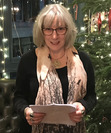Paula R.C. Readman's Blog, page 51
February 13, 2021
The Last Thread
Please check out Kandisha Press blog to read their summary of my story.
IN THE LI-BURY WITH PAULA R.C. READMAN

February 11, 2021
Looking for inspiration
 This is Cressing church, near my village, but I’m rename it as I’m add graves that aren’t there.
This is Cressing church, near my village, but I’m rename it as I’m add graves that aren’t there. Finding inspiration in the landscape around me.
My new novel As The Crow Flies is a bit different from anything else I’ve written so far. The problem I’m having at the moment is how to slip from one time line to the next as the story is told through three different eras. In this novel I want to introduce Granny Wenlock so the reader can get to know her much better and understand her story too. I’m hoping I can keep the same sense of humor which flowed between the characters in the The Funeral Birds.
Now that I’ve settled on Temple End as the name of the village where Dave and Joan lives, I can start building the backdrop to their story too. Dave’s roots are in the village as he grew up in Temple End. This will make it more plausible to the reader when I make a time shift as Granny make contact to her ancestor Dave across the centuries. Dave will have a real sense of history and his love of the landscape will help keep him ground in the village where his ancestors had lived for over four hundred years.
 This beautiful church, with its avenue of limes tree, dates back 481 years.
This beautiful church, with its avenue of limes tree, dates back 481 years. The former Order of St John, the Knights Templar had a huge estate at Cressing, Essex, England which amounted to 1,440 acres of arable land, 40 acres of meadow and five water-mills. This ensure a maximum income to assist the Order with their work in the Holy Land and help their money-strapped brothers in Rhodes.
Their English headquarters were founded in London by King Stephen in 1128 and the Cressing Manor was also granted to The Templar by the King and his wife Matilda.
This beautiful little church is set among the acres of arable land once owned by the Knights Templars and is about a mile from where their manor house once stood. I’ve named the church in my novel, As The Crow Flies Gray’s church even though it isn’t a ruined church, but it does fit in nicely within the historic time line I’m trying to create for the purpose of my novel. Hopefully, in the future, if the book is well received, I can continue using the real historical events within the area I live and weave them in to my story lines.
Please click on the pictures to enlarge. All photos taken by me. Books used in my research: The King’s England, Arthur Mee’s Essex published in August 1940. The Knights of St John in Essex, by Kenneth Nicholls Palmer 1991
 Cressing Church: (renamed Gray’s Church) seen from road.
Cressing Church: (renamed Gray’s Church) seen from road.
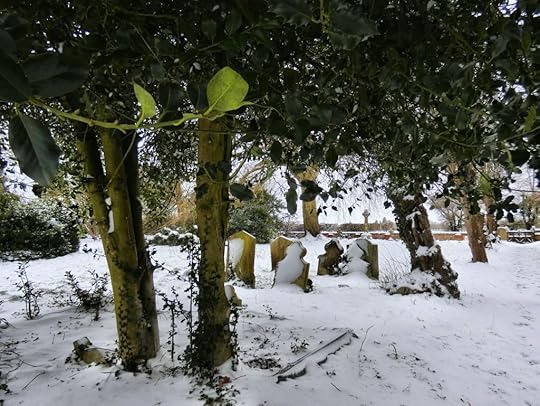 Cressing Church Yard Feb 2021
Cressing Church Yard Feb 2021
February 10, 2021
A Walk Back In Time.
I spend too much time sitting at my computer, so for obvious reasons, I like to go for a walk in the morning. Normally, my friend Ana and I follow the public footpaths, but due to the heavy rain and now snow this has made many of them impassable so we now stick to walking on the roads.

My new novel, As the Crow Flies is going to be set in the landscape that surrounds my village. In the novel I’m changing the name of the village, plus creating a new layout and adding a few buildings that don’t exist. Where I live is steeped in history. Much of it dates back to Roman Britain. A nearby town located on an estuary that leads into the North Sea, fought a battle in 991 AD to stop invading Vikings.
In 1136 the Knights Templar once owned a large area of land which was granted to them by Queen Matilda of Boulogne, the wife of King Stephen. On the land surrounding my village once stood a mansion house, a bakehouse, brewery, dairy, granary, smithy, gardens, dovecote, watermill and windmill. So I have decided in As The Crow Flies to call the village Temple End. Temple End sits on the outskirts of a market town.
My friend and I set out to walk to a small local church that stand on the outskirt of another village. Have looked up the history of the area, I’ve discovered that I can change the name of that village quite easily to Broadwell. In the past it was thought that the real village got its name from a broad well, or a spring rising to the east of the location where Broadwell Hall once stood until it was destroyed by fire. The church of The Holy Trinity stands outside the village next to a farm down a country lane. The church dates back to the 11th century and has a wooden belfry that continues 3 bells cast by Miles Grays 1609.
Now the framework for the setting is coming together for As the Crow Flies not only in my head but on paper too.

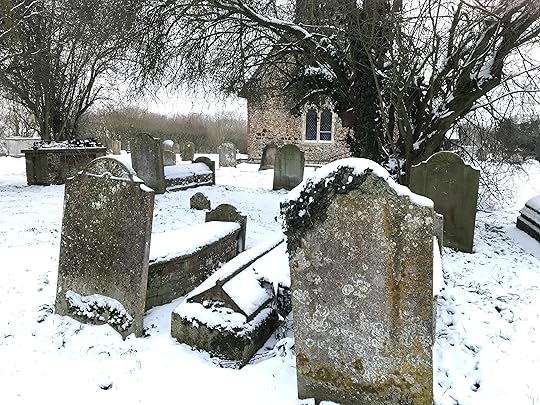



February 9, 2021
Clubhouse Guest’s Chat: Barry Faulkner
Welcome to Clubhouse Chat page. Those of you who are not a member won’t be aware that the location of the Clubhouse is shrouded in mystery. The only way to visit it is via membership or an invite to the tearoom. Every few days, I’ll be sharing a conversation with all sorts of writers and authors at different levels of their writing careers. Over tea and cakes, or maybe a glass of something stronger, I shall be chatting with my guest about their work in progress, or latest book release.
 Photo by Purple Smith on Pexels.com
Photo by Purple Smith on Pexels.comToday, I’m chatting to Barry Faulkner. Welcome to the tearoom, Barry. What would you like to drink?
Thank you for the invite, Paula. I’m a coffee person, preferably Morrison’s French style.
Now we have our refreshments can I start by asking you when you first begun your writing journey what drew you to your chosen genre?
English teacher Mr Reid at the William Penn Comprehensive School, East Dulwich, London. He sent a short story I’d written aged 14 into a LCC (London County Council in those days) schools competition and somehow I won 1st prize, a pen! Never won anything before or since so it was a red letter day and lit the fire inside me. I followed that up at 16 with a letter of encouragement from the head of comedy at the BBC saying a script I’d sent in was very good and I should carry on writing. These days the Beeb won’t even look at anything unless it’s through an agent. I left school and became a copy writer in advertising and kept sending stuff around the various media and ended up as Writer/Script Editor at the BBC and other ITV companies on a freelance basis. But I really owe it all to Mr Reid.
 Barry Faulkner
Barry Faulkner
Tell us a little about latest writing project. Is it a new idea, or one you have been mulling over for some time?
I’m about to publish the first in a new series featuring international private eye Ben Nevis and his lady partner The Gold Digger. From their office in the Borough High Street, London, their cases take them all over the world. In the first one they go chasing illegal missiles being sent to the Iranian Revolutionary Guard via Cyprus and Turkey. It’s all action involving organised crime, bent financiers and MI6, which is quite different to my DCS Palmer and the Serial Murder Squad series. Ben is a cross between Reacher and Bond and doesn’t take prisoners.
 ‘Got any biscuits to go with this coffee Paula?’
‘Got any biscuits to go with this coffee Paula?’How many unfinished projects do you have on your computer?
Too many J! As well as two more DCS Palmer, one more Bidder Beware volume, three Ben Nevis and a dystopian adventure, all sketched out, I’ve the beginnings of a follow up to my factual book about major UK Criminals ‘London Crime’ that will be looking at UK serial killers. I need to shut down the part of my brain that comes up with new book ideas for a while!
Choosing only five of your favourite authors. Can you list them in order 1 begin the top of your list and say how have they influenced your writing?
1. Laurie Lee the best descriptive writer ever. My books tend to be fast action so I don’t do descriptive scenes but he could, amazing writing, taught me to use adjectives sparingly and in context.
2. John Steinbeck, I must have read The Grapes of Wrath six or seven times, it is a monument to classic writing and sucks you into the American ‘dust bowl’ life in the great depression of early 1930s with the best human relationship observant writing you’ll find anywhere.
3. Ian Fleming for the James Bond books, couldn’t put them down when I discovered them as a teenager, pure escapism from my Brixton stomping ground, but you wondered if that really was the world of spies and hit men. 4. Robert Crais, his Cole and Pike novels mix the serious with the sarcastic in equal parts. He has his own style of writing and Cole’s asides and observations of other people are spot on.
4. A little off-piste here, Martin Scorsese and his writer Steven Zallian for the film The Irishman, and the writer of the book it was based on, I Heard You Paint Houses, Charles Brandt for all those great De Niro and Joe Pesci gangster film scripts culminating in The Irishman. The producers of the rubbish Kray and Hatton Garden films could learn a lot from the master.
5. John Cooper Clarke, ‘the punk poet’. I had never even read poetry until I was on a train in the 70’s going from London to Manchester with John Cooper-Clarke going up for a Granada TV bash and we hit it off. I came away with a book of his poems and a new interest. I don’t write poetry myself but the use of words by some of the contemporary poets is just amazing.
Were any of your characters inspired by real people?
Not on purpose but you’ll see from my biography page on my website that I met quite a few criminal ‘characters’ through family connections so I am quite open to the idea that some of them, an indeed some of the ‘coppers’ too, lurk inside my brain and surface now and again. I have the son of a retired Detective Sergeant (he’s 92) who emails me after each new DCS Palmer book to tell me ‘dad says so-and-so is based on Mr X or Sergeant Y,’ but they aren’t, well not consciously anyway.
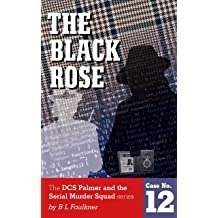
What did you learn when writing your book? In writing it, how much research did you do?
Oh what a question! I think authors who do research learn so much. I’m very lucky that I have a daughter who is very high up in the Police, a niece who is a forensic scientist and the son of a good friend who works in the National Police Improvement Agency which supersedes PITO, Police Information Technology Organisation in keeping one step ahead of the criminals in IT, cyber and dark web technology. So I can usually get the answer to any procedural, scientific or technological questions that pop up when writing.
Is there anything about you your readers might be surprised to find out?
My family background. I do lots of illustrated talks (not during covid) to WIs and other social clubs on the major UK crimes and criminals 1930s to the present day. I start off by giving my family background and when I finish that part I always tell the ladies present that I have noticed how they all checked their handbags when I was speaking, and really they should be more worried about my brother and the low loader in the car park!
What is your work schedule like when you’re writing?
I am one of those writers who need peace and quiet and hates interruptions when the words are flowing so I write from 11pm – 1 am. Sometimes I get so involved the dawn breaks and the other half appears with the dogs leads in her hand. A silent order. We have three Springers and live in the Forest of Dean so dog walks are a joy and great for clearing the brain. I do book promotion, catch up with the mail in the morning, gardening and lounge about (some chance!!) in the afternoon. Evenings are entertainment time with Netflix and Premier league. I don’t read a lot, I like Narcos films and series like Escobar, Breaking Bad and my all time favourite The Sopranos or I might watch the AC/DC Live at the River Plate concert on You Tube ( again) with the ear phones on as the wife is a drum n’bass fan. We miss going to live shows at the moment.
How do you select the names of your characters? Do you know everything about them before you start writing their story?
I have a brief outline of the plot and the characters are unnamed at that stage. They acquire names as we go along as the plot always changes and I like them to fit their character. Most have either Christian or surnames of people I’ve known or know personally or from newspapers. For instance if I’m describing a big fat thief and his surname is Green I think readers will get an image?
How long on average does it take you to write a book?
About 6 weeks once the outline is down on paper, then leave for a week and edit twice, then send out ARCs ( always open to new ARCs joining my happy band) then it goes to the proof reader, then the editor. At this point my cover designer gets an ARC and comes back with ideas and sketches. When all is in place it goes onto my website, I publish and try to get some traction of various face book pages and twitter which is hard going as indie writers don’t have major publishers sending out freebies and signed copies so I find FB pages tend to get the same authors being promoted all the time, but that’s life eh? Do you want a hand with washing up the cups, Paula? I’m house trained.’
Thank you, Barry for your kind offer, but we have a dish washer  . To find out more about Barry’s books and writing check out the links below:
. To find out more about Barry’s books and writing check out the links below:
Website : barry-faulkner.com
Twitter @crimewriter1
Facebook: Barry Faulkner
UK Crime Book Readers and Writers Page. ( forensic stuff)
Amazon books: Author’s Page Amazon
If you want to find out more about Clubhouse Member’s Books don’t forget to check out the Clubhouse Bookshops too.
Wow! Great Review
I’m so pleased my sci-fi story The Last Thread got a mention in this review for Kandisha Press third anthology.
kendallreviews.com/book-review-the-one-that-got-away-various/


February 8, 2021
Clubhouse Guest’s Chat: Gwendolyn Kiste
Welcome to Clubhouse Chat page. Those of you who are not a member won’t be aware that the location of the Clubhouse is shrouded in mystery. The only way to visit it is via membership or an invite to the tearoom. Every few days, I’ll be sharing a conversation with all sorts of writers and authors at different levels of their writing careers. Over tea and cakes, or maybe a glass of something stronger, I shall be chatting with my guest about their work in progress, or latest book release.
 Photo by Engin Akyurt on Pexels.com
Photo by Engin Akyurt on Pexels.comToday I’m chatting to a modern day fairytale writer, Gwendolyn Kiste. Welcome to the tearoom.
Thank you so much for my invite, Paula. This is an amazing place to get to, and so well hidden. The coffee smells wonderful too.
I’m so glad you approve. Let me start by asking you to tell us a little about latest writing project. Is it a new idea, or one you have been mulling over for some time?
Right now, I’m working on my third novel, Reluctant Immortals, which will be out in 2022 with Saga Press. It’s all about Lucy Westenra from Dracula and Bertha Antoinetta Mason from Jane Eyre as they navigate the tumultuous Summer of Love in 1960s California while dealing with Dracula and Edward Rochester who have shown up in their lives again. The book is actually a combination of two of my previous stories—“The Eight People Who Murdered Me (Excerpt from Lucy Westenra’s Diary” and “The Woman Out of the Attic”—so it’s an idea I’ve been working on for a while now. Also, as a longtime fan of both Jane Eyre and Dracula, I’ve thought a lot about the characters of Bertha and Lucy over the years, and how I feel they both deserved better, so this is certainly a concept that’s lived in me for some time.
As for my most recent book that’s already been released, that would be Boneset & Feathers from Broken Eye Books, which came out in November 2020. It’s all about witches and witch hunters, and that’s definitely a concept that’s been on my mind for years. Way back in elementary school, I did a big project on the Salem Witch Trials, and it always terrified me how an entire town could do that to their own people. So writing a book about witch hunts has been on my mind for decades at this point.
Do you write a synopsis first or write the first chapter?
For my short fiction, I almost never write a synopsis, and I usually don’t write chronologically, but novels are such a different beast altogether. For those, I definitely write a synopsis first. It helps me to see the shape of the overall story. It’s so easy to lose the thread of a novel or lose track of specific details as you’re going. I also tend to write my novels in order, and I don’t tend to move on to the second chapter until the first one is fairly solid and edited. That way, I’ve got a strong base for the rest of the story.
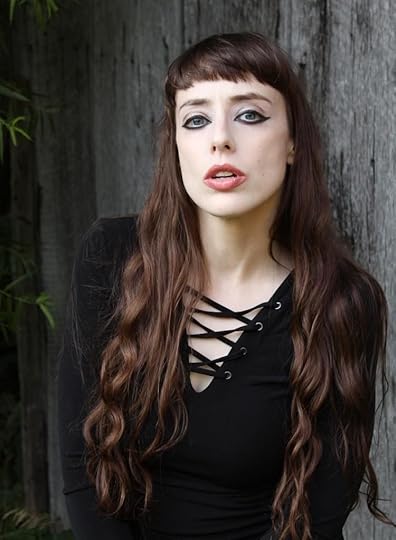 Gwendolyn Kiste
Gwendolyn Kiste
When reading your work through do you ever find that your daily mood swings are reflected in your writing?
That’s certainly happened before. Overall, I would say my work tends to reflect certain periods in my life more than a specific day or mood. I can look back on my books or stories I’ve written and be able to recognize particular images or ideas or themes that were really resonating with me at that point. As writers, our work is sort of this living document of our lives, tracing where we were at moments in time, almost the same as a diary except that the contents are fictional—or at least mostly fictional, let’s say!
What did you learn when writing your book? In writing it, how much research did you do?
For my latest book, Boneset & Feathers, I did a lot of research into fairy tales, witchcraft, witch trials, and that general era in European history. The book wasn’t solidly set in any time period—I wanted it to feel like a fairy tale, which can have a rather timeless quality to it—but I did want to draw on certain specific details just to root it in reality.
For my next book, Reluctant Immortals, it’s been really fun to research California in the late 1960s. It’s one of my favorite time periods, so it’s been great to explore everything about that time. The clothes, the cars, the day-to-day news. It was a tumultuous era, and in a way, that brings me a strange sort of comfort since we’re living through particularly tumultuous times now. It’s good to remember that people can get through difficult periods in history and come out the other side of it.
Is there anything about you your readers might be surprised to find out?
Hmmmm… I never know what people might be surprised to know. So here are a few random details about me: I’ve taken about three years of ballet dancing (and I’m still pretty terrible at it). I have a lifelong hatred of iceberg lettuce and green peppers. I can’t roll my tongue. I have no piercings or tattoos. I used to be a fashion designer, and I put together over fifty fashion shows and dozens of photo shoots during my 10+ years in the industry. Hopefully, something in there was a surprising detail!
Did you uncover things about yourself while writing your books, whether that be a long forgotten memory, a positive experience etc.
Absolutely. I’ve found so often that writing is an act of free associating and that my mind almost goes into a dreamlike state when I’m working. When I’m done with a story or a book, I’ll reread it and see certain images recurring or certain themes that I didn’t necessarily realize were lurking in my mind at the time when I was writing it. Then in the editing process, I’ll actually go through and bring those ideas more to the forefront, since that’s clearly what I was thinking about in the first place, albeit subconsciously.
Do you set yourself a daily word count?
I’m not usually very good at setting daily word counts. I’ve found when I set word counts, I work toward a number rather than working toward the best possible quality. So often in fiction, less really is more, so just writing, for example, 1,000 words doesn’t necessarily mean it’s a good 1,000 words. There have been many days where I’ve deleted far more words than I’ve written, and those are usually much better writing days than the ones where I hit a higher word count. That being said, I know that word count goals work so well for many authors; I’m just not one of them, which goes to show once again that there’s no one set way to be a writer. Whatever works for one writer might not work for another, and that’s not only all right, but it’s actually expected and a really good thing.
How many hours in a day do you write?
That really depends. Before last year, I would say I usually wrote about six hours a day and almost always in the evening. Now, however, I’m at home all the time because of the pandemic. Without anything to do outside of the house, I write a lot more often. I’d say most days I’m writing twelve hours a day. That’s not always fiction writing, of course; it could be nonfiction, content for my blog, guest posts for other sites, etc. But I’m definitely at my computer far more these days. That’s both good and bad, to be honest; it’s nice to have more time to write, but in the past, many of my best ideas have come from when I’m away from my computer and my mind has time to wander and free associate. I’m hoping to make better use of my writing time in 2021, but we’ll see how that works out for me!
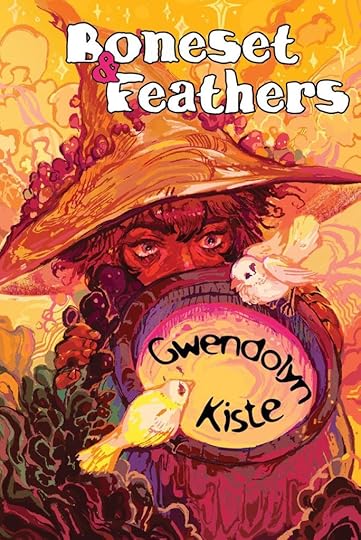
How do you select the names of your characters? Do you know everything about them before you start writing their story?
I love naming characters. It’s such an exciting process, especially since you might be looking at that name for weeks or months to come. If it’s a historical book, I try to research what names were popular then to make sure that whatever I call my characters is also time period appropriate.
I wish I could say that I know everything about my characters before I start writing, but I actually find the act of writing in itself to be an act of discovery. As I write, the characters often reveal themselves to me in unexpected ways, which is one of my favorite things about the creative process. It can be such a magical experience to have a story start to take a different direction than you were expecting, especially when you realize that the direction is even better than the one you were originally planning.
How long on average does it take you to write a book?
That can change so much from project to project. I’ve had short stories that have come together in a day or two, and other stories that have taken literally years. For example, my Stoker-winning story, “The Eight People Who Murdered Me (Excerpt from Lucy Westenra’s Diary),” took almost two years from the time I came up with the concept until it was ready for submission. For my short fiction, I would say an average is probably about two to three weeks for a story, but again, that can differ wildly.
As for my novels, that’s even more variable. The first draft of my first novel, The Rust Maidens, took about three months, while my second novel, Boneset & Feathers, took a year. When it really comes down to it, it seems like every project has a mind of its own. And maybe that’s exactly the way it should be. At the very least, it keeps writing interesting!
Thank you for joining me in the tearoom, Gwendolyn. To find out more about Gwendolyn’s writing and books please click on the links below.
Blog: gwendolynkiste.com
Facebook: facebook.com/gwendolynkiste
Twitter: twitter.com/gwendolynkiste
If you want to find out more about Clubhouse Members’ Books, don’t forget to check out the Clubhouse Bookshops too.
February 7, 2021
Clubhouse Guest’s Chat: Hayley Walsh
Welcome to Clubhouse Chat page. Those of you who are not a member won’t be aware that the location of the Clubhouse is shrouded in mystery. The only way to visit it is via membership or an invite to the tearoom. Every few days, I’ll be sharing a conversation with all sorts of writers and authors at different levels of their writing careers. Over tea and cakes, or maybe a glass of something stronger, I shall be chatting with my guest about their work in progress, or latest book release.
 Photo by Pixabay on Pexels.com
Photo by Pixabay on Pexels.com
Today I chatting to women’s fiction writer, Hayley Walsh in the tearoom. Welcome to the tearoom, Hayley.
Thank you for the invite, Paula. The tearoom is lovely. I bet the gardens look amazing in the summer.
Yes, they do. You’ll have to come back again later in the year. Let me start by asking you when you first began your writing journey what drew you to your chosen genre?
I have always been a big fan of light hearted women’s fiction. I have a great sense of humour and love to laugh, so when I decided to write my own book, I knew I wanted to make others laugh too. ‘Bridget Jones’s Diary’ by Helen Fielding is one of my favourite books, and was the inspiration behind my book titled ‘Making March’. Like Helen’s book, it is written in first person point of view in the form of the protagonist’s diary. I love the fact that these books talk about everyday issues that women face in a humourous way. We can all relate to that, and that is I what I love about my chosen genre. I also love to read a good thriller with a twist you don’t see coming at the end, but I am yet to attempt to write one. Who knows, one day I might give it a crack.
What writing elements do you think are your strongest points, and what would you like to do better?
I think I am good at making my main character relatable, and making the story fun and easy to read. When I queried the manuscript for ‘Making March’, a couple of responses from literary agents, told me I needed to show the reader what was happening, rather than tell them, and this is easier to do when the book is written in third person. So, after my first two books, written in first person were published, I decided to challenge myself as an author. My current works in progress are all being written in third person, and I am really enjoying the process of learning how to better show, not tell.
 Hayley Walsh
Hayley WalshTell us a little about your latest writing project. Is it a new idea, or one you have been mulling over for some time?
I currently have three projects I am working on.
The first one is a novel titled ‘Scattered Scones’. It is about a fifty-two-year-old lady who after receiving a devastating diagnosis, decides to take off on an impromptu road trip, across the country with her best friend, to try and reconnect with her estranged daughter. Although the story deals with some serious issues, it is still light hearted, and their will be manyinteresting people she meets on her travels, who will help her accept her uncertain future.
The second one is a novella titled ‘Not Dead Yet’. This tells the story of seventy-one-year-old Mary, who sells up her home and moves interstate to a Retirement Village, 12 months after losing her husband of fifty-one years. Mary has always enjoyed her own company and struggles with the many personalities she encounters in the village. There are two things Mary won’t tolerate, idiots, and nasty women. Unfortunately for her, the village is full of them. Has Mary made a mistake moving there, or will she find something wonderful?
The third one is another Novella titled ‘Tis Not the Season to be Molly’. This is a fun story about the emotional and mental burden placed on women to ensure Christmas happens. You know, buying the presents for everyone, writing out and sending all the cards, decorating, cooking, cleaning up etc. Poor Molly is considering going on strike this year? What will happen if she does?
Were any of your characters inspired by real people?
Yes, absolutely. Kate, my protagonist in ‘Making March’ is based on many elements of my own personality. Her daughter Heidi also contains elements of me. The main character, Natalie, in ‘Crayons and Chaos’ was also based on me and my real-life experience of having to adjust to becoming an instant step mum to two boisterous young boys, or miniature terrorists as Natalie likes to refer to them, with no kids of my own, at the age of forty-one. I work as an Aged Care Clinical Nurse Consultant in my day job and have heard so many stories from older people over the years. Both ‘Scattered Scones’ and ‘Not Dead Yet’, were inspired by the stories of two patients I looked after. I feel there are not enough stories told about older people, and I wanted to bring my readers a story about an older person and the issues they face.
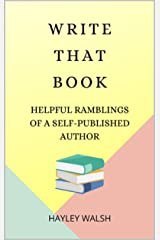
What is your work schedule like when you’re writing?
I don’t have a schedule I stick to. I simply write when I can find the time, or when inspiration strikes. I have note books full of scribble everywhere. On my desk at work, in my car, and all over the house.
Do you set yourself a daily word count?
No, I don’t. As I work a full-time day job in order to pay the bills, I try not to put any pressure on myself. Depending on what my week looks like (we have my partner’s kids’ week on and week off, and he is a shift worker), some weeks I might bash out 6,000 words, and other weeks, I write nothing due to time constraints, and running the kids around.
How many unfinished projects do you have on your computer?
Just the three I have spoken about, along with bits and pieces I’m working on for my blog.
What did you learn when writing your book? In writing it, how much research did you do?
Writing ‘Not Dead Yet’, has given me a great appreciation for authors who write genres such as historical fiction. In the book there are flash backs to the 1950’s, the 1960’s, and the 1970’s in Sydney Australia. I had to look up so many little details such as, was that ice cream invented yet, in order to ensure it was accurate. It’s exhausting and very time consuming.
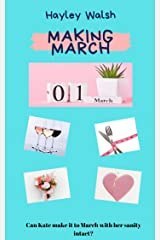
Did you ever consider writing under a pseudonym?
My Pen name is my maiden name. I have always wondered whether I would use a different pen name if I ever tried my hand at writing another genre, but I think I would use the same name, and make it clear on my website what genre a book falls under. I’ve read a lot about this topic, and many experts advice authors to stick to one pen name, even if writing different genres, as maintaining two author brands, websites, and social media accounts, would be very difficult.
How long on average does it take you to write a book ?
Ha Ha. How long is a piece of string? It took me five years to finish ‘Making March’. I first started writing it in 2012. I was forced to put it on hiatus many times over the next five years due to job changes, my father’s death, and a marriage break up. I finally picked it back up in 2017, determined to get it finished.
‘Crayons and Chaos’ only took me six months to write. At the time I was querying ‘Making March’, and was looking for a new project to work on. A work friend of mine suggested my real-life experience, would make a funny story that many parents could relate to. It was easy to write, as so much of it really happened.
I have been working on ‘Scattered Scones’ for two years. ‘Not Dead Yet’, I started writing in August last year, and it is almost finished. I have only started working on ‘Tis Not the Season to be Molly’, but plan to have it completed by November this year. I am not putting any pressure on myself to finish ‘Scattered Scones’, as I want to query it for a while when complete.
Thank you for joining me in the tearoom, Hayles. To find out more about Hayles’ writing and books please click on the links below:
Blog: https://www.hayleywalshauthor.com/
Facebook: https://www.facebook.com/TaylesbyHayles
If you want to find out more about Clubhouse Members’ Books, don’t forget to check out the Clubhouse Bookshops, too.
February 6, 2021
Clubhouse Guest’s Chat: Susie Kearley
Welcome to Clubhouse Chat page. Those of you who are not a member won’t be aware that the location of the Clubhouse is shrouded in mystery. The only way to visit it is via membership or an invite to the tearoom. Every few days, I’ll be sharing a conversation with all sorts of writers and authors at different levels of their writing careers. Over tea and cakes, or maybe a glass of something stronger, I shall be chatting with my guest about their work in progress, or latest book release.

Today I’m welcoming apocalyptic thriller writer, Susie Kearley to the clubhouse tearoom to talk about her book, Pestilence. Welcome, Susie.
Thank you for the invite to your lovely tearoom, Paula.
It’s lovely to have you here. Now we have our refreshments can I ask you when you first begun your writing journey what drew you to your chosen genre?
As a teenager I wanted to be a horror author, but at that age my manuscript ran out of steam, and the novel wasn’t published for another 30 years. By this time it had evolved into an apocalyptic thriller, Pestilence, published 2021: mybook.to/pestilencebook
I began my career as a magazine journalist at the age of 36 and my genre was driven by who was prepared to commission me. Money talks when you’ve just quit the day job. From the outset I would tackle any subject, and my first job was with a military history magazine, exploring the story of a local war hero. I did a lot of work for gardening magazines too.
How have other authors influenced your writing?
I was inspired to be a novelist by James Herbert. I picked up one of his books when I was 15 and was completely drawn into his story. I thought it was brilliant and aspired to be like him. Since then, I’ve developed my own style and am told my novel is more reminiscent of work by HG Wells or John Wyndham!
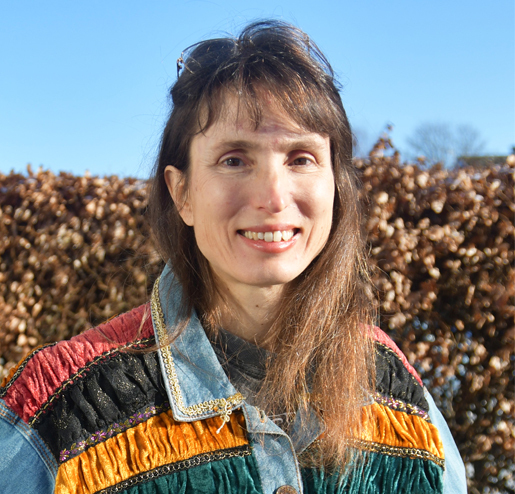 Susie Kearley
Susie Kearley
Is there anything about you your readers might be surprised to find out?
I was quite surprised to hear that my 97 year old mother-in-law wanted to read my novel. She’s a huge fan of People’s Friend’s cosy tales. I would say my novel is a bit lively for her tastes! I’m glad I took the swear words out in one of the last edits.
What is your work schedule like when you’re writing?
I work from about 8am to 5pm every day and go for a walk in the afternoon – the break is important and can help to reset the mind and enhance the creative process.
Do you set yourself a daily word count?
Not in particular, but I try to write an article every day, which would usually be around 1000 words. Achieving this goal was easier before lockdown, because I had more commissions coming in. But even during slow periods, I try to be productive every day, and that might involve working on a book, photo editing, or keywording on a picture library – I sell photos through Alamy too. A few weeks ago, I was doing the cover design for my novel ‘Pestilence’, so these days, my productivity takes many forms.
How many hours in a day do you write?
Usually I focus on writing in the morning, so I might get a draft done in four hours, but then I’ll do editing in the afternoon, or work on something different, like sorting out photographs to accompany my work. There’s a lot of administration, including pitching to editors, invoicing and keeping my accounts up to date, record keeping, tax returns, etc, so I need to fit these into my schedule. The job isn’t all about actually writing, as nice as that would be.
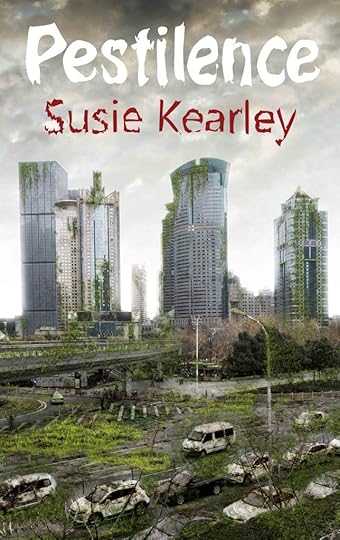
Did you ever consider writing under a pseudonym?
Oh yes, I have written under a pseudonym many times. I have used pen names when a magazine wants to publish more than one piece of my work, but doesn’t want to use my name more than once. I have used a pen name when I’m writing for competing magazines too. I have no qualms about using a pen name.
How do you select the names of your characters?
I worked out the character profiles for my novel, Pestilence, many years ago. The names chosen were just names I was familiar with – perhaps people I knew – but the characters were not like the people I knew. I did write some character profiles to help me get started, my characters definitely came to life and evolved when I started writing.
How long on average does it take you to write a book?
The first draft of my novel, Pestilence, was created when I was 16. It ran out of steam and was shelved for 20 years. I worked out the ending when I was 36, and used National Novel Writing Month to sort it out. I then focused on journalism, while it sat on a virtual shelf for another decade. I eventually took two months off work to complete the novel in 2019! 2020 was the year of trying to figure out what to do next, while approaching agents. 2021 was publication year! I think 30 years is extreme. I wasn’t actually working on it for most of that time.
Another book I wrote took about two months to put together. I also have compilations of articles that I’ve self-published and these were quite quick to produce.
Thank you for joining me in the tearoom, Susie. If you would like to find out more about Susie’s writing and books check out the links below:
Petilence Novel: mybook.to/pestilencebook
Amazon Author Page: Author.to/SusieKearley
Author Website: http://www.susiekearley.co.uk
If you want to find out more about Clubhouse Members’ Books, don’t forget to check out the Clubhouse Bookshops, too.
Shh 🤫 don’t tell…
It is so wonderful when there’s so much sad in the world at the moment to receive good news. Yesterday, I received an email that brightened my day, which I can’t mention yet, and then not long afterwards a message from a reader of my novella, The Funeral Birds.
A lovely lady messaged me to say how much she enjoyed reading my novella and that she had my other books sitting in a queue on her kindle. This in itself is wonderful and uplifting to know my writing is slowly, but surely has a growing number of followers. It makes my time spent at the keyboard worthwhile and all the promoting that I’m doing is really bringing results.
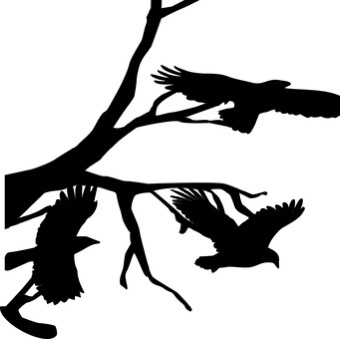
A few months ago, I was in the dark about marketing and promoting and was unsure whether what I was doing made any difference. I think it helps have had my writing published in a wide range of anthologies as my name is already out there, but unlike anthologies there isn’t anyone else to help with the promotion of the book as it only has your name on the cover.
A publisher friend of mine told me, I need more than a couple of books on Amazon to start see the results of my labour. So hopefully once I have completed my follow on novel, As The Crow Flies it will go towards keeping the readers interested in my writing. I’m hoping to have one book coming out a year, while writing the next one. I have a few incomplete novels sitting on my computer already so hopefully I’ll be up and running already.
Have a wonderful weekend and keep safe 
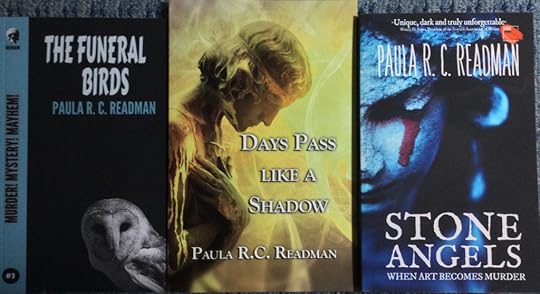
Clubhouse Guest’s Chat: Maressa Mortimer
Welcome to Clubhouse Chat page. Those of you who are not a member won’t be aware that the location of the Clubhouse is shrouded in mystery. The only way to visit it is via membership or an invite to the tearoom. Every few days, I’ll be sharing a conversation with all sorts of writers and authors at different levels of their writing careers. Over tea and cakes, or maybe a glass of something stronger, I shall be chatting with my guest about their work in progress, or latest book release.
 Photo by Engin Akyurt on Pexels.com
Photo by Engin Akyurt on Pexels.comToday I’m chatting to Maressa Mortimer about her writing and books. Welcome to the tearoom. May I ask you, Maressa what you would like to drink?
Thank you for the invite, Paula. Oh, could I have a Caramelatte, with only half the caramel shot, so it still tastes of coffee
Now we have our refreshments, may I start by asking you when you first begun your writing journey what drew you to your chosen genre?
I started writing after blogging about a fictional family. That made me look at the world around me more. My favourite genre is Christian novels, which is maybe a bit broad. What I mean is, any kind of story, but dealing with faith in everyday life. I like it because for many people faith seems to be a private, Sunday matter, and I love to see it working out in general life. I mainly write for my own enjoyment, but it’s wonderful to hear from people who have read my books.
What writing elements do you think is your strongest points, and what would you like to do better?
I love writing dialogue. I can just imagine people chatting with each other. I feel it’s my strongest point, as I struggle with descriptions. It’s hard, as I can picture the entire setup, but I forget to colour it in for my readers.
Tell us a little about latest writing project. Is it a new idea, or one you have been mulling over for some time?
I have just started a new project, whilst waiting for my wonderful editor to come back with my manuscript covered in red! I wanted to try out something completely new to me, to challenge myself and push myself, rather than just write what feels more natural. So I’m writing a Speculative Fiction/fantasy type book, named Burrowed, writing in First Person and using Past Tense, both are new to me. It is set on a fictional island called Ximiu (ksi mi-you) and I’m loving it. I thought of it whilst reading a book called Writing Fantasy and Sci-Fi during the Christmas Holidays.
Do you write a synopsis first or write the first chapter? If you only write short stories, or do you plan your story or let the characters lead you?
I’m a pantser, so I don’t plan my stories. It’s getting more complex though. I do plan the characters, and for Walled City I did quite a lot of world-building, which I loved. I have no idea where my story will lead me, although I might have snippets of conversation I want to be in the book…somewhere. This time around, with Burrowed, I have a proper plan! Some of the details will fill in themselves as I go along, so I’m still surprised by some of the stuff my characters come up with. Which is why I normally write present tense, as I have no idea what’s awaiting me or my characters. Having a plan allows me to write in the past tense for the first time, so I’m loving the change!
Were any of your characters inspired by real people?
Sapphire Beach was all about me making sense of a friend’s horrendous marriage. It grieved me, shocked me and taught me a lot. I started looking into domestic violence more and then wrote the book to process it all. The character is fictional but in a way a generic picture of what could be a victim of DV. For Burrowed I have downloaded images, to help me to picture the main characters. For the settings, I use either real-life places, as the wonderful beach in Sapphire Beach or fantasy maps. It helps me to picture the people or places, so I don’t make mistakes in describing them.
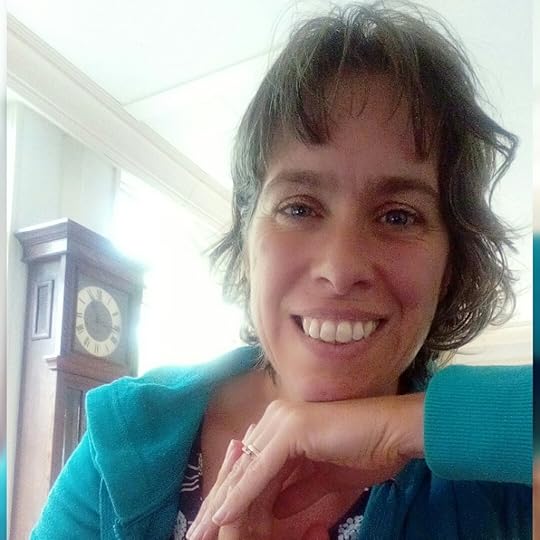 Maressa Mortimer
Maressa Mortimer
What did you learn when writing your book or story? In writing it, how much research did you do?
I ended up with a lot of research for Walled City, even though it was set in a fictional world! I was taken by surprise as you think you can make it all up! Worldbuilding still involved looking at a lot of facts and how things work. Sapphire Beach had a lot of research, like the little island in Crete and artefact thefts. I never realised before writing a novel how much you need to look up. It feels so smooth and natural when you read a book, doesn’t it? It’s easy to go down rabbits trails as well. Some of the research for Burrowed has been incredible, and easy to fill your days just reading up on facts.
What is your work schedule like when you’re writing?
I write in the evening once the kids are in bed. That is also the time to exercise, read and tidy up, haha. I love the quiet though, as it means I can settle down with my thoughts and dreams. I tend to write by chapter, and it’s hard to concentrate if other things are happening. It does feel rewarding, once a chapter is finished, to then just curl up with a book and chocolate.

Do you set yourself a daily word count?
Sapphire Beach and Beyond the Hills were written during NaNoWriMo, where the word count is 50,000 words in November. That helps tremendously, as it’s a good way to get your words in. For Burrowed I have set the word count at 60,000 by the end of February, which gives me almost 6 weeks. It’s just to encourage myself, and I use the NaNoWriMo site to keep track. I write chapters, and for Burrowed the chapters are just over 1,000 words, the same as Sapphire Beach. Walled City and its sequel, Beyond the Hills, were almost 3,000 words per chapter. That means that at the moment it is easy to write a chapter a day, or maybe even two. It takes the pressure off and feels like a quick dip into this exciting story.
How do you select the names of your characters? Do you know everything about them before you start writing their story?
I love thinking up names for characters. Sapphire Beach had ‘normal’ names, as it was more realistic. Martha seemed a good fit for my main character, even though she got on my nerves a lot. For Walled City I used Latin words, turning them into names, fitting the character of my people. Gax, the main character, is a different story. His is based on a fun word, which was the nickname of a friend’s son, haha, very involved, but fun for me.
Burrowed is the same, Latin words, made into surnames. For the first names, I used a baby names site for unusual names and looked again for meaning to fit the roles of my characters. I started to build a character sheet for my characters, as it helps a lot with their non-verbal communications, and the way the story will move forward. In Beyond the Hills, the character changed a lot during the story, although she did have a few brief lapses back into the rather unpleasant person she used to be.

How long on average does it take you to write a book or story?
It doesn’t take long to write my books. As long as I have book dreamed the story, haha. I do think about what might happen next to the characters, or things will come to mind. Sapphire beach took me six weeks to write, then a long time to have it edited and published. Walled City took a little longer to write, as it was so spread out. Beyond the Hills was two NaNoWriMos and an extra week. Stories are building up in my head at the moment, so Burrowed will have to be done in quite a disciplined way. I have a feeling my next few books will have to be like that too, otherwise it will take too long before I can tackle the next exciting project. I have really fallen in love with writing, and it’s harder to keep the stories in. I love the idea of setting writing goals, and it’s making it easier to then simply wait for the next story to start.
When I wrote Sapphire Beach, it was the only story in my heart and mind. Walled City came along, and halfway through, the next book announced itself, and the next… So now there are all these ideas and stories lined up in my head. I see an interesting picture, and a story grows. So I will have to be more disciplined! I’m loving it though, and have been writing for a magazine and various blogs as well, which allows me to try out different things, like poetry, short storytelling and non-fiction writing.
I also found that I’m more critical with what I have written, so I have started editing bits, which I never did before. In Burrowed, one of the characters is a poet, so I have included bits of poetry, again, just to challenge myself.
Thank you for joining me in the tearoom, Maressa. To find out more about Maressa’s work please click on the links below:
Website: https://www.vicarioushome.com
YouTube channel: https://www.youtube.com/channel/UCEJw3r5gW6twS4XztDJpiww
If you want to find out more about Clubhouse Members’ Books, don’t forget to check out the Clubhouse Bookshops, too.

